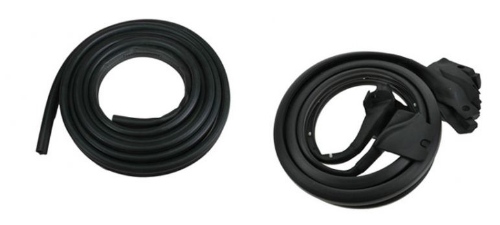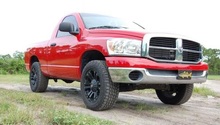Dodge Ram 2002-2008: Common Problems
The Dodge Ram is a monster truck that holds up well against high mileage; however, some owners have experienced these common problems.
This article applies to the Dodge Ram (2002-2008).
The Dodge Ram 1500 is a full-size pickup truck with a lot of muscle for the road. Built to tow heavy loads, the Dodge Ram is one of the best selling pickup trucks on the market. Performing better than the Ford F-150 in major crash test scenarios such as the front crash offset test, according to Insurance Institute for Highway Safety, the Dodge Ram is a wonder in safety and technology. Dodge Ram owners who follow their maintenance schedule to the letter can fully expect to drive their pickup truck well past the 200,000-mile mark. Let's go over a few of the components that might require a little more of your attention throughout the years. Giving these components the tender love and care they deserve will help to ensure your pickup truck goes above and beyond your expectations.
Component Breakdown
Rack and Pinion
The truth is the Ram is known for internal leakage. Moreover, it's likely that you'll need to have your rack and pinion replaced after a few years of use. Including replacement and alignment, the total repair cost could reach as high as $500 and $1,500, depending on the rack and pinion replacement you choose. If cost is not an issue, it's recommended that you spend the extra $50 to have a power steering flush at the time of the replacement. Remember to regularly check your steering wheel system for leaks. You could catch a small problem before it turns into a bigger, more expensive one.

Ball Joints and Tie Rods
The ball joints and tie rods on the Dodge Ram 1500 are prone to excessive wear and may require replacement at 70,000 to 150,000 miles. Ball joints are an essential part of your truck's suspension system (as are tie rods) and generally cost between $350 to $2,220 for a replacement. Tie rod replacement can run you as much as $150 to $475. Lubricating these parts could help them last longer. High quality, aftermarket, greaseable replacement ball joints and tie rods are available for around $30 to $120, respectively.

Doors
As your Dodge Ram ages, the seals on your doors can become worn down, allowing noticeable wind noise into the cabin. The cheapest solution to this common problem is to install thicker weatherstrip seals, which are available at your local Dodge dealership for around $50.

Scheduled Maintenance
- Have major systems inspected regularly and change system fluids as they become contaminated or run low.
- Replace spark plugs every 30,000 miles and check brake linings every 12,000 to 15,000 miles.
- If squealing noises emanate from the front end of your truck, see a certified automotive mechanic immediately, as a component within your brake system could be damaged; other culprits could be bad brake oil and loose or worn-down wheel bearings.
- Continue to inspect the wear on your tires every month, depending on how much travelling you do, and have them rotated at every oil change.
- As well, pop the hood of your truck and check your battery for signs of corrosion along the terminals.
Common Questions
My brakes pull to one side. Should I have them replaced?
The need for brake replacement will depend on a number of factors, including, but not limited to, when and for how long your brakes experience the condition. If your brakes pull to one side for a few stops and then ease up after you've driven your truck for a few miles, the pulling you are experiencing may be normal; this is also if the condition returns. However, if there is a problem it is most likely a damaged rotor, loose or binding calipers or a larger brake system failure. Visit your local Dodge dealership to have a complete inspection of your engine performed.
How do I improve the circulation of heat inside my Dodge Ram?
Adjust the blend door, as needed, to open up more vents and push heat from all sides. Check the circulator door as well to ensure it is fully open.
Why does my truck refuse to go into gear?
If your truck refuses to go into first gear from a stop, or at any other time, the likely culprit is bad transmission fluid, and you'll need to get a transmission flush. It's recommended that you have your transmission fluid changed every 30,000 miles.
Related Discussion
- Common Issues with the Dodge Ram - Dodgeforum.com






